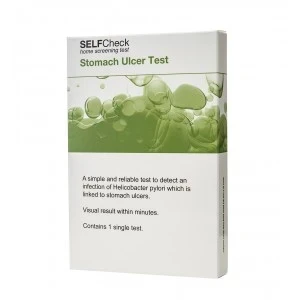SELFCheck Stomach Ulcer Test
- Click on the green "Get Started" button, then click "Start Consultation" button on the next page.
- Fill in our short consultation form.
- Choose delivery method and mode of payment.
- Our team of expert prescribers will assess whether medication is suitable.
- If you get the green light and it is deemed suitable, your order will be processed quickly and efficiently.
Your privacy is important, Prescription Doctor are committed to keeping your details completely confidential.
This is why we also take steps to conceal your prescription products under two layers of packaging.
We have a commitment to delivering a discreet service and understand your need for privacy. We ship all orders via a trackable courier using discreet, plain packaging.
Once your order is dispatched you will receive a tracking number via sms and email.
We deliver medications between Monday and Saturday. You can upgrade to Saturday delivery on Friday.
You should receive a tracking number with your order which you can use this number to track your parcel online. This should give you a clear indication of where your parcel is. If you haven’t received your parcel in the time frame given by our couriers, contact your local depot to find out where it is. You can also contact our support team who will do this for you.
On checkout you will be asked to leave your mobile number so our courier can text you about the delivery. This is also useful if the courier has problems finding your address. We will not use your mobile number for anything else.
You can pay for your order using credit, debit card or via bank transfer.
If you don’t have a credit or debit card you can pay via bank transfer. We will give you a unique reference number at checkout along with details of how to make the transfer. Once the money has cleared in our account, we will process your order.
We are a completely secure site and take many measures to ensure your details are kept safe. We understand that you have a right to extreme privacy when purchasing sensitive health medications. All information that you provide to us is stored on our secure servers. Any payment transactions will be encrypted using SSL technology.
You can pay for your order using credit, debit card and bank transfer.
Card Payment: Please notify us that you wish to cancel your order. Your refund will show available In 1 - 3 days.
Bank Transfer: A member of our team will contact you requesting for your bank details. These details are only used to transfer the funds back into your account.
Table of contents:
Buy SELFCheck Stomach Ulcer Test Online
The stomach ulcer test kit is an easy-to-use immunological test. It looks for antibodies triggered by an immune response to a bacterial infection caused by Helicobacter pylori (H. pylori) - a bacterium that commonly causes ulcers in the stomach.
The test can be performed from the comfort of your own home and provides results in mere minutes. The result is presented as coloured bars, similar to a pregnancy test, which are easy to interpret using the enclosed leaflet.
When you buy a SELFCheck Stomach Ulcer Test online from Prescription Doctor, our UK pharmacy will dispatch it to your door via a confidential delivery service.
What are stomach ulcers?
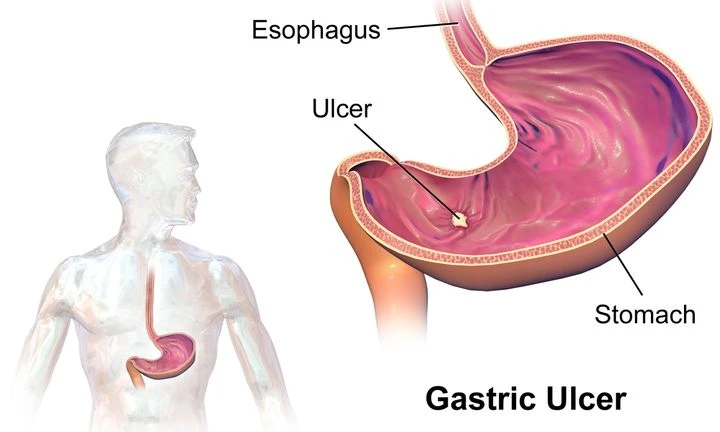 Stomach ulcers - sometimes referred to as gastric ulcers or peptic ulcers - are open sores in the lining of the stomach.
Stomach ulcers - sometimes referred to as gastric ulcers or peptic ulcers - are open sores in the lining of the stomach.
Symptoms of a stomach ulcer include:
- Feeling sick (nausea)
- Heartburn
- Indigestion
- Loss of appetite
- Severe abdominal pain (typically after eating)
- Vomiting
- Weight loss
If you experience any of the following symptoms, call NHS 111 or go straight to the nearest accident and emergency department:
- Vomiting blood (may appear bright red or dark brown)
- Bloody stools (dark, sticky, tar-like stools)
- Abrupt, sharp pain in your stomach which gradually worsens
Stomach ulcers can be caused by taking NSAIDs, such as Ibuprofen, at high doses or for a prolonged period. In most cases, stomach ulcers are caused by a bacterium called Helicobacter pylori (H. pylori). According to the NHS, there is little evidence to suggest that eating spicy foods or drinking alcohol contributes to the development of stomach ulcers, though they may exacerbate your symptoms.
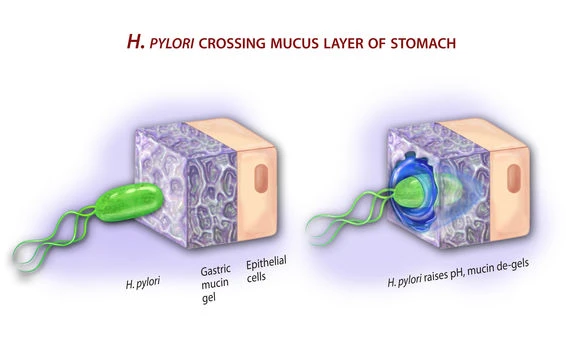
H. pylori is a bacterium which has developed to survive the acidic environment of the stomach. It uses its flagellum (tail) to swim through the gastric fluids and buries itself into the less acidic lining of the stomach (epithelium). The bacteria damage the epithelial cells, leading to inflammation of the stomach lining (gastritis) and the development of stomach ulcers.
While it is understood that H. pylori is contagious, the exact mechanism of its transmission is not yet known. It is thought that the bacteria are spread via gastric mucus through either the oral-oral or faecal-oral routes.
A person can be infected with H. pylori from a young age but not experience symptoms until later in life. Furthermore, links have been found between long-term H. pylori infections and stomach cancer.
How are stomach ulcers treated?
Stomach ulcers caused by H. pylori are typically treated with an antibiotic to kill the bacteria and an antacid, such as pantoprazole, to manage associated symptoms, including heartburn.
If left untreated, stomach ulcers can cause very serious complications such as internal bleeding, gastric obstructions and perforation of the stomach. Therefore, it is very important to seek treatment and advice if you suspect you have a stomach ulcer.
How does the SELFCheck Stomach Ulcer Test work?
The SELFCheck Stomach Ulcer Test is an at-home blood test which detects specific antibodies associated with H. pylori infections.
Antibodies are chemicals released by the body's immune system in response to bacteria and viruses. Certain infections release specific kinds of antibodies. These specified antibodies can be used to identify the presence of a specific virus or bacteria.
The test is conducted entirely at home and doesn't require you to send off any samples. Unlike a laboratory test, this home test provides results in minutes, making it a fast and convenient option. Using the enclosed leaflet, you and your healthcare provider can interpret the results and, if needed, discuss an appropriate course of treatment.
How do I use the SELFCheck Stomach Ulcer Test?
The SELFCheck Stomach Ulcer Test comes with everything you need to conduct the test from the privacy of your own home. Please follow the enclosed instructions carefully to ensure an accurate result. Ensure you read all the information provided with the home test kit before proceeding with the test.
Each test comes with:
- 1x test cassette (with desiccant to keep it dry)
- 1x small bottle of buffer solution
- 1x single-use lancet
- 1x plaster
- Instructions
You will also need:
- A clean tissue
- A watch with a second hand (or a stopwatch)
Before you perform the test, ensure that you have all the necessary apparatus to conduct the test.
Verify that the bottle contains liquid (buffer solution). You should only use the buffer solution provided with the test kit.
Do not open the foil package until you are ready to take the test.
Do not use the test if the foil package is damaged.
Wash your hands with soap and water before taking the test. You can use alcohol swabs or wipes to sterilise the finger you will be lancing, though these wipes are not included with the test. Dry your hands before acquiring the sample.
Instructions for use
1.) Remove the test cassette from the foil packaging and place it on a flat surface. Discard the desiccant (small white package) out of the sight and reach of children and pets.
2.) Remove the safety cap from the lancet by twisting it until it clicks. Separate the protective cap by twisting the cap through a complete revolution, being careful not to press the trigger at the top of the lancet. Set the safety cap aside.
3.) Press the lancing end of the lancet against your middle fingertip and press the trigger to release the needle. The lancet will prick your finger.
4.) With your entire arm hanging down, and your pricked finger pointing to the ground, wait for a significant drop of blood to form at the end of your finger. You may need to squeeze or massage the sides of your finger to promote blood flow.
5.) Hold your pricked finger over the test field on the test cassette. The test field is marked with "S1". Allow the drop of blood to fall into the test area. Do not touch the test area with your finger. As soon as the drop of blood is on the test area, wait for 30 seconds.
During this 30-second period, you can cover your finger with the plaster included with your test kit.
6.) Unscrew the cap from the buffer solution and slowly add nine drops to the buffer field marked with "S2".
Wait for 10 minutes. Waiting for less than or more than 10 minutes may cause unreliable results.
7.) Evaluate the results.
Evaluating the results
The results should appear on the cassette within 10 minutes of applying the buffer solution.
After waiting 10 minutes for the result, you have a 5-minute window in which you should interpret your result. Waiting any longer may yield a false interpretation and render the test invalid.
Positive result (confirmed infection)
2 lines appear. C and T, even if the line for T is faint.
Important: A positive result may occur after a year of a previous H. pylori infection, even if your condition was previously treated.
Negative result
1 line appears for C, but no line appears for T.
Invalid result
No line appears for either C or T.
Once you have read your result, you should safely discard the test equipment. You can dispose of the used lancet, test cassette, and buffer solution in your household waste. However, ensure that the used equipment is out of sight and out of reach of children and pets.
Do not discard any of the testing equipment via water waste (i.e do not flush any testing apparatus down the toilet).
Frequently asked questions
What should I do if the test produces a positive result?
If your home test produces a positive result, you should speak to your GP as soon as possible. They will be able to conduct an examination and advise on the best treatment for you.
What should I do if the test produces a negative result, but I am experiencing symptoms of stomach ulcers?
If the test result is negative but you are experiencing symptoms of a stomach ulcer, consult your doctor to arrange an examination.
This test only detects the presence of bacteria that cause stomach ulcers. But H. pylori is not the only cause of stomach ulcers.
What should I do if the test produces an invalid result?
If the test result is invalid, contact the manufacturer. For further information, please refer to the leaflet enclosed with the home test kit.
How long does a stomach ulcer take to heal?
With appropriate treatment, a gastric ulcer may take up to 3 months to completely heal. Your doctor will discuss with you the most suitable treatment, which may include antibiotics and proton pump inhibitors, commonly used to manage heartburn.
How can I prevent stomach ulcers?
Stomach ulcers are commonly caused by bacteria or the use of non-steroidal anti-inflammatory drugs (NSAIDs). Depending on the cause, your doctor may recommend lifestyle changes or adjustments to your medication to reduce your risk. Things you can do include taking NSAIDs, such as ibuprofen, aspirin and naproxen, with food - this can prevent the drug from irritating the lining of the stomach. In some people, the bacteria that reside in the stomach lining can irritate it, making them more susceptible to developing stomach ulcers. Smoking can also be a contributing factor to developing stomach ulcers, so quitting smoking may reduce your risk.
What should I do if I waited longer than 10 minutes?
The test result cannot be interpreted reliably after 15 minutes. After 15 minutes, you should discard the test cassette once you have read your result. You should retake the test, ensuring that you follow the instructions carefully.
Testing Clinic Alternatives
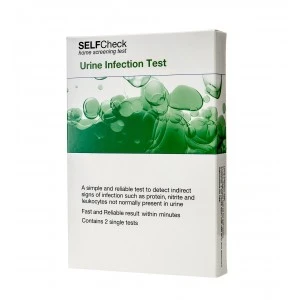
SELFCheck Urine Infection Test
- Results within minutes
- Next-day delivery from a UK pharmacy
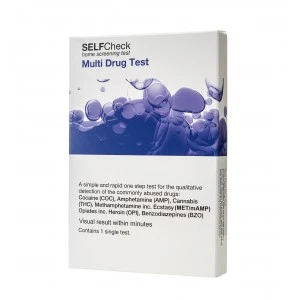
SELFCheck Multi Drug Test
- Results within minutes
- Next-day delivery from a UK pharmacy
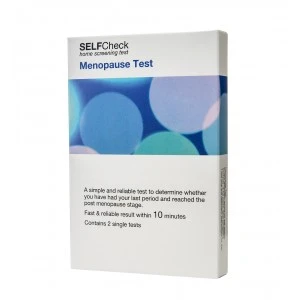
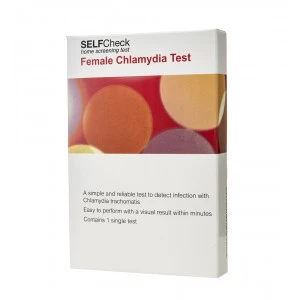
SELFCheck Female Chlamydia Test
- Results within minutes
- Next-day delivery from a UK pharmacy
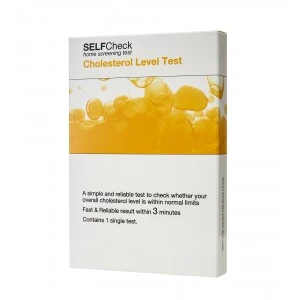
SELFCheck Cholesterol Level Test
- Results within minutes
- Next-day delivery from a UK pharmacy
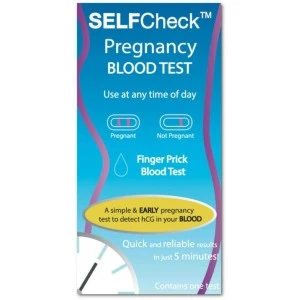
SELFCheck Pregnancy Blood Test
- Discreet delivery
- Accurate results
- Detects pregnancy sooner than urine tests
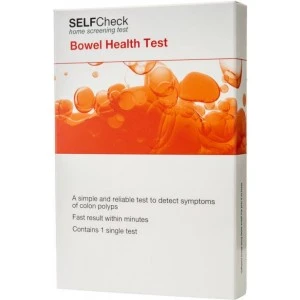
SELFCheck Bowel Health Test
- Quick results
- Discreet packaging
- Test bowel health at home
© 2013 - 2026 Al Muhsineen Limited. All Rights Reserved. Registered Pharmacy: 34 Halliwell Road, Bolton BL1 8RL. Registered Office: 254 First Floor, Shearbrow, Blackburn, England, BB1 8DS

